Disclosure: This article contains affiliate links. We may earn a commission from purchases at no extra cost to you, which helps our travel content.
The rhythmic clacking of steel wheels against rails has always reminded me of cricket balls hitting bats in succession—a comforting percussion marking the passage of time and distance. As someone who's spent decades documenting sporting traditions across continents, I've developed an appreciation for journeys that connect cultural dots across vast landscapes. None, perhaps, is more profound than the Trans-Siberian Railway—a 9,289-kilometer steel thread binding Russia's diverse tapestry together. After covering the Rugby World Cup in Japan last year, I decided to take the slow route home to Wellington, boarding the train in Irkutsk with my well-worn journal and a fortnight to spare. What followed was not merely a physical journey east, but a temporal one—backwards through Soviet history, imperial Russian ambition, and indigenous Siberian resilience, all while moving forward toward the Pacific's embrace. This is my chronicle of two weeks spent traversing Russia's historical backbone, where each station serves as a chapter in the country's complex narrative.
Irkutsk: Gateway to Baikal and Tsarist Elegance
Irkutsk struck me immediately as a city of contrasts—wooden Siberian cottages with intricate blue shutters standing proudly alongside stern Soviet apartment blocks. As a starting point for the eastern segment of the Trans-Siberian journey, it offers the perfect introduction to Russia's historical layers.
I spent two days exploring before departure, wandering through the 130 Quarter (Irkutskaya Sloboda) where restored 19th-century buildings house artisan workshops and cozy cafés. The elaborate wooden architecture—a testament to the wealth that once flowed through this fur-trading outpost—reminded me of the ornate cricket pavilions I'd documented in colonial-era Indian hill stations, both serving as symbols of a bygone elegance.
Lake Baikal, just an hour's drive from the city, demanded a day trip. Standing on its shores was humbling; this is no ordinary lake but an inland sea containing 20% of the world's unfrozen freshwater. As a conservation enthusiast, I was heartened to learn about efforts to protect the lake's endemic species, though concerned about increasing tourism pressure. The crystal-clear waters and surrounding taiga forests create an ecosystem as precisely balanced as any sporting team's formation.
Before boarding the train, I purchased a detailed Russian railway map that proved invaluable throughout the journey. Having the route visually laid out helped me anticipate stops and understand the geographical context of this massive undertaking.
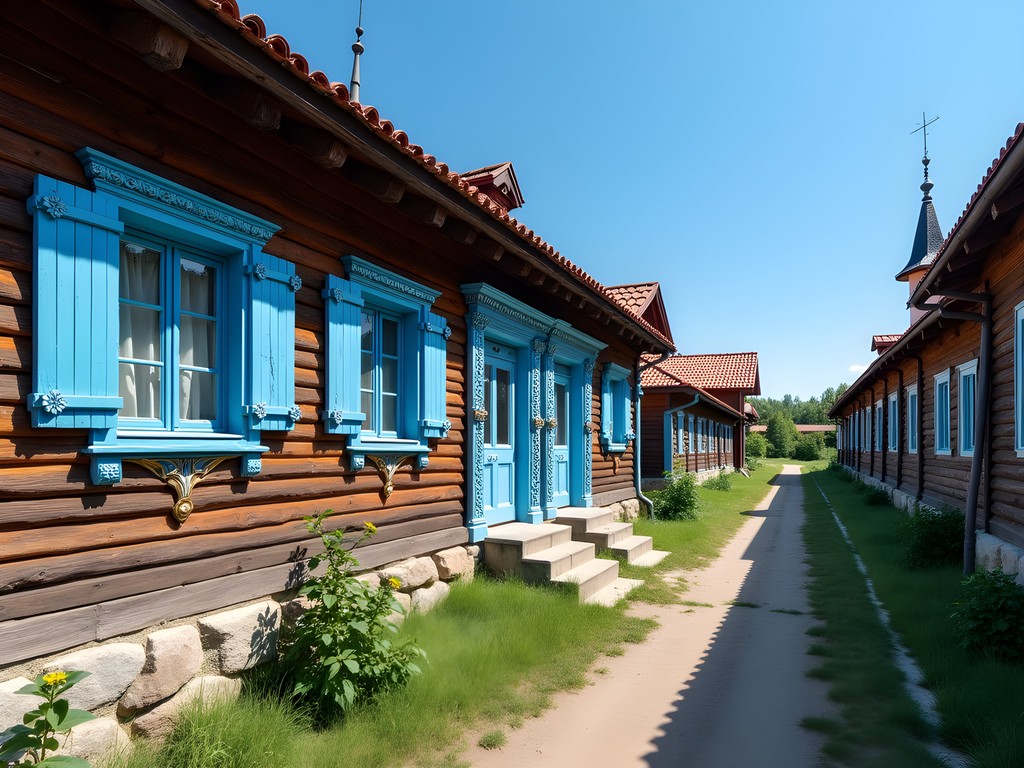
💡 Pro Tips
- Visit the Decembrist Museum to understand the city's role in Russian revolutionary history
- Take the circum-Baikal historical train for spectacular lake views from restored vintage carriages
- Purchase supplies for the train journey at the Central Market, where local vendors sell homemade snacks
Life Aboard the Steel Artery
The Trans-Siberian isn't merely transportation—it's a temporary society, a moving village with its own rhythms and customs. My compartment (kupe) became both home and office for the journey, a space where I'd alternate between watching the endless Siberian landscape unfold and typing notes on my travel laptop, which proved perfectly suited to the limited space.
The social ecosystem of the train fascinates me as much as any sporting community I've documented. Russians are initially reserved but warm considerably once proper introductions are made. In my compartment, I shared space with Nikolai, a retired engineer returning to Khabarovsk after visiting his daughter, and Irina, a university professor heading to a conference in Vladivostok. Our conversations, aided by my basic Russian and their varying levels of English, evolved from polite nods to animated discussions about everything from global politics to the best way to prepare the instant noodles sold by the babushkas at station platforms.
The provodnitsa (carriage attendant)—ours was a stern-faced woman named Galina with surprising bursts of humor—maintains order with military precision. She keeps the samovar at the end of each carriage filled with hot water, essential for the endless cups of tea that punctuate the journey. There's something meditative about preparing tea while watching birch forests and small villages streak past, the rhythm of the train becoming so familiar you notice its absence during the frequent stops.
Station stops become highlights—from brief technical pauses to the longer 15-30 minute breaks where passengers sprint to platform kiosks. At these stops, local vendors (many of them elderly women) sell everything from smoked omul fish near Baikal to homemade pirozhki (stuffed buns) and berries gathered from the taiga. These fleeting markets offer glimpses into local economies and traditions that tourists rushing through on planes would never witness.
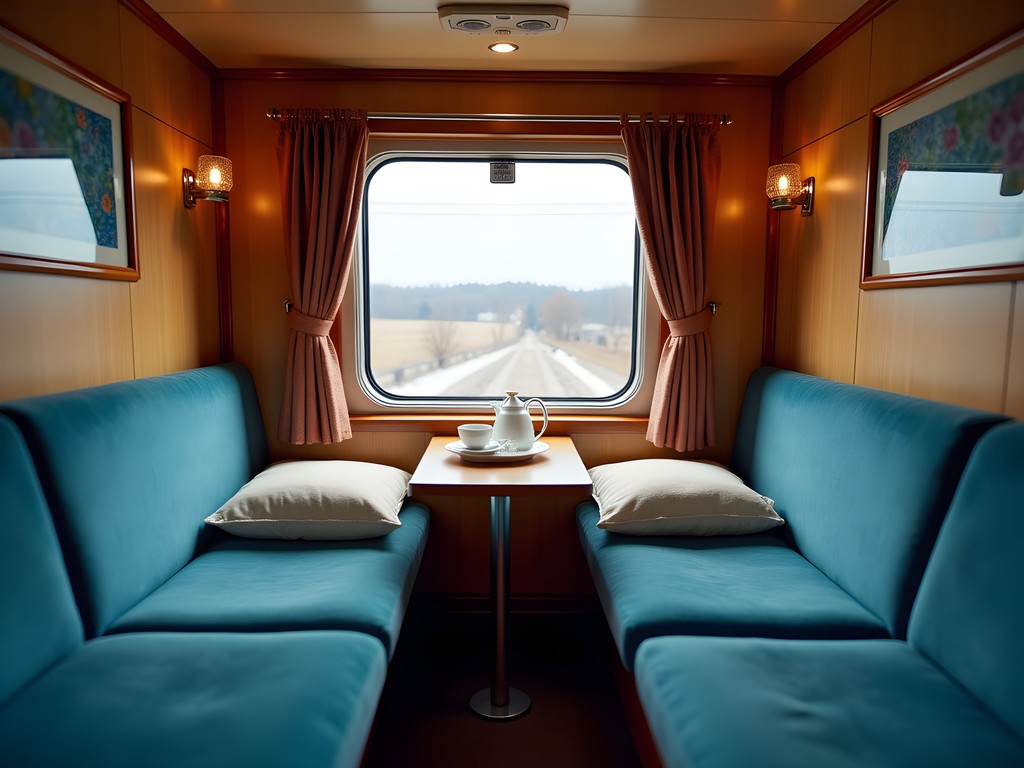
💡 Pro Tips
- Pack a Russian phrasebook or download a translation app that works offline
- Bring a mug, spoon, and various teas/instant foods for the journey
- Set an alarm for longer station stops to avoid missing the train after exploring platforms
Ulan-Ude: Where East Meets West
The giant Lenin head in Ulan-Ude's main square—supposedly the largest in the world—serves as an apt metaphor for this fascinating city where Soviet ideology once overlaid ancient Buddhist and shamanistic traditions. Located in the Republic of Buryatia, this is where you feel Russia's European character begin to blend with Asian influences.
During our four-hour stop, I ventured beyond the standard tourist path to visit the Ivolginsky Datsan, the center of Russian Buddhism. The contrast between the colorful prayer flags fluttering against the backdrop of Siberian pine forests created a visual harmony that reminded me of how seemingly disparate sporting traditions often share fundamental principles across cultures.
The monastery complex, with its temples and prayer wheels, felt worlds away from the Orthodox churches of Irkutsk just hours earlier by train. Monks in burgundy robes went about their daily rituals while visitors circumambulated the main temple. I was fortunate to witness a prayer ceremony, the deep resonance of chanting monks creating a meditative atmosphere that stayed with me long after I reboarded the train.
Ulan-Ude also marked my first encounter with Buryat cuisine. At the recommendation of a local I met at the station, I tried buuzy (meat-filled dumplings) at a small family restaurant near the main square. Eating them properly—sipping the rich broth before consuming the dumpling—requires technique not unlike the precise movements of traditional sports. The restaurant owner, noticing my interest in local culture, showed me photos of the Surkharban festival, where traditional Buryat sports like archery and wrestling continue to thrive.
For documenting these cultural encounters, my travel camera proved invaluable—compact enough for train travel yet capable of capturing the vivid colors of Buddhist temples and the expressions of local people without being intrusive.
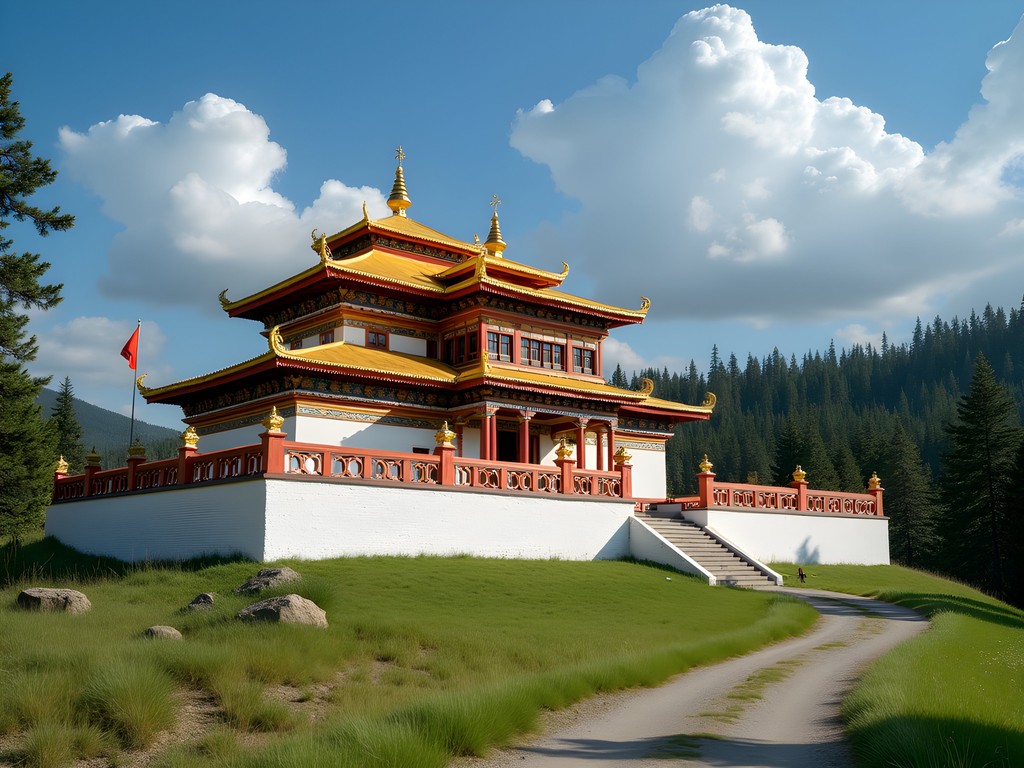
💡 Pro Tips
- Visit Ivolginsky Datsan early in the day to witness morning prayers
- Learn the proper technique for eating buuzy (pinch the top, bite a small hole, drink the broth)
- Exchange some currency at the station as smaller towns may not have reliable ATMs
Khabarovsk: Imperial Ambitions on the Amur
After days of forests and small settlements, arriving in Khabarovsk feels like emerging into another world. This city, positioned strategically on the mighty Amur River near the Chinese border, embodies Russia's historical push eastward. The broad boulevards and elegant pre-revolutionary buildings speak to imperial ambitions, while the massive river—forming part of the border with China—reminds visitors of the geopolitical significance that continues today.
I scheduled a 24-hour stopover here, breaking my journey to explore this far eastern hub. The Amur River embankment proved to be the heart of city life, with locals fishing, strolling, and picnicking along its shores. Standing on the bluffs overlooking the river, I could almost see the 19th-century Russian explorers and Cossacks who pushed the empire's boundaries to this natural frontier. The massive iron bridge spanning the river—once the longest in Imperial Russia—stands as a monument to engineering ambition.
The Regional Museum provided context for understanding this frontier city, with exhibits detailing the indigenous Nanai people's culture alongside displays of Russian expansion. What particularly struck me were the parallels between traditional Nanai sports—especially their wrestling and boat racing traditions—and similar practices I'd documented among indigenous communities in New Zealand and Australia. These physical cultures, developed in response to specific environments, show remarkable convergent evolution.
For dinner, I enjoyed a meal of Amur River fish at a riverside restaurant, watching the sunset paint the water in shades of amber and gold. The chef, learning of my interest in local traditions, explained how seasonal fishing practices have been maintained for generations, with techniques adapted to the river's changing moods.
My evening walk through the city revealed a lively nightlife scene—young Russians enjoying summer evening promenades along beautifully illuminated streets. For capturing these nighttime scenes, I relied on my travel tripod, compact enough to fit in my daypack yet sturdy enough for long-exposure photography of the illuminated river bridges.
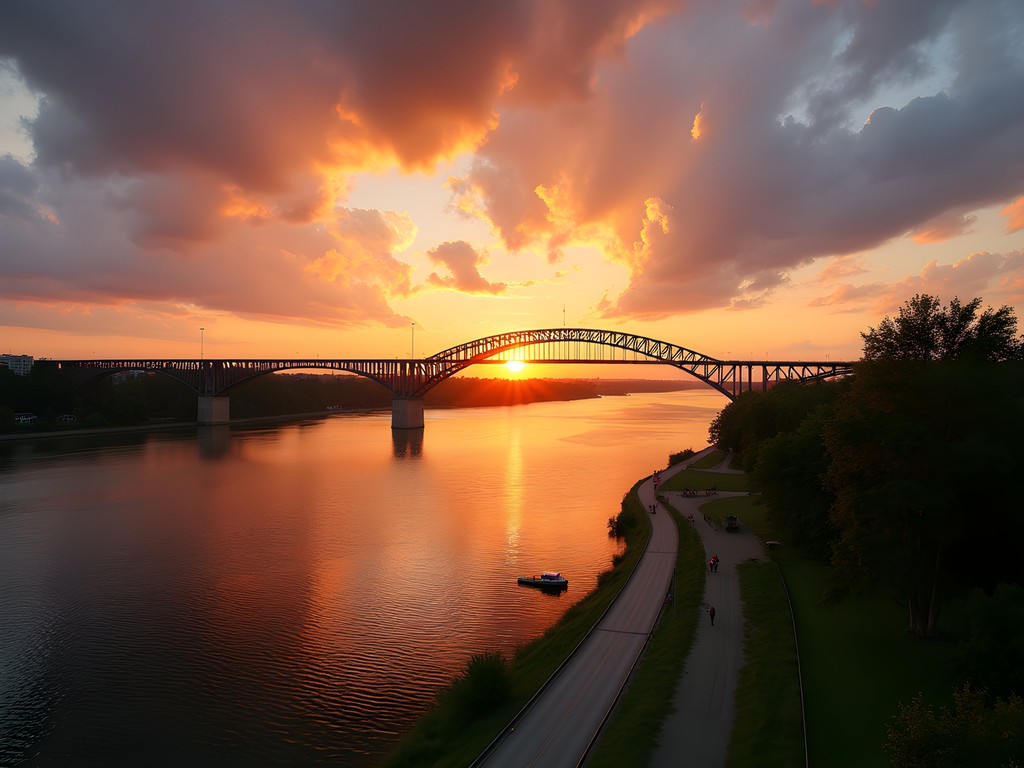
💡 Pro Tips
- Take a river cruise for the best views of the city and the China-Russia border region
- Visit Khabarovsk Regional Museum to understand the complex history of Russian expansion
- Try Amur River fish specialties at restaurants along the embankment
Vladivostok: Russia's Pacific Finale
After nearly two weeks aboard the Trans-Siberian, pulling into Vladivostok station delivers a profound sense of accomplishment. The terminus of this epic railway sits just kilometers from North Korea, Japan, and China—a fitting conclusion to a journey spanning nearly the entire width of the world's largest country.
Vladivostok defies expectations. Rather than the remote outpost many imagine, it's a vibrant port city draped dramatically across hills overlooking Golden Horn Bay, earning frequent comparisons to San Francisco. The city's naval heritage is immediately evident—the Pacific Fleet has been based here since Tsarist times, and maritime influences permeate everything from cuisine to culture.
The recently constructed bridges spanning the bay have transformed the cityscape, with the massive Russky Bridge (once the world's longest cable-stayed bridge) connecting the mainland to Russky Island. These engineering marvels, built for the 2012 APEC Summit, represent modern Russia's desire to create a significant eastern hub facing the Asia-Pacific region.
For history enthusiasts, the Fortress of Vladivostok offers fascinating insights into Russia's defensive posture in the Far East. The network of forts, built between 1889 and 1918, never saw major combat but represents the most extensive fortress complex in Russia. Walking through these structures, I was reminded of similar fortifications I'd visited in Wellington—both cities shaped by their strategic maritime positions and the need to defend natural harbors.
Culinarily, Vladivostok offers the journey's most diverse options. The proximity to Japan, Korea, and China has created a fusion food scene where European Russian dishes incorporate Asian influences and ingredients. The seafood is outstanding—I particularly enjoyed the king crab at a restaurant overlooking the harbor, watching ships from across the Pacific dock as I dined.
As a fitting conclusion to my Trans-Siberian adventure, I hiked up Eagle's Nest Hill for a panoramic view of the city where Russia meets the Pacific. Standing there, contemplating the vastness of the journey—from the Siberian forests near Lake Baikal to this maritime frontier—I felt a connection to the countless travelers who had made this journey before, each carrying their own stories along this iron road of history.
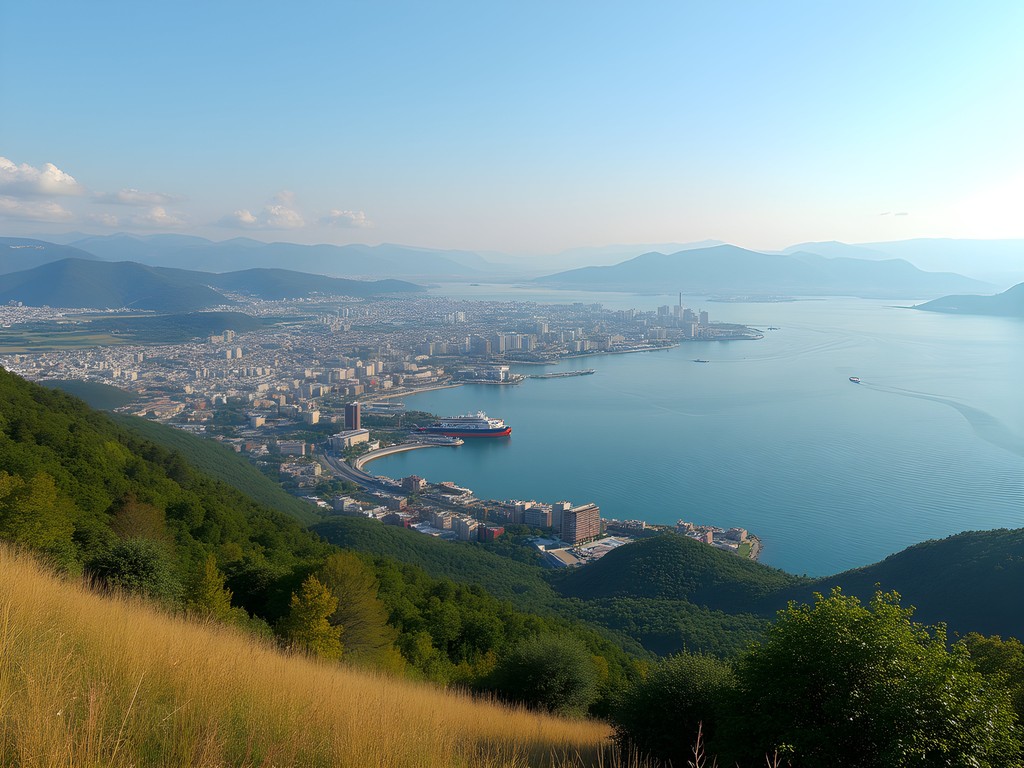
💡 Pro Tips
- Take the funicular to Eagle's Nest Hill for the best city views
- Visit the S-56 Submarine Museum to understand the city's naval heritage
- Try the fusion cuisine that blends Russian traditions with Korean, Japanese and Chinese influences
Final Thoughts
The Trans-Siberian journey from Irkutsk to Vladivostok offers more than transportation—it provides passage through Russia's historical memory and cultural evolution. Like any great sporting contest, this railway journey demands endurance, adaptability, and an appreciation for the subtle rhythms that develop over time. The experience connects travelers not just to Russia's diverse landscapes and peoples, but to generations who have made this same journey since the early 20th century. For couples seeking a travel experience with depth and perspective, this historic route delivers rich rewards for those willing to embrace its unhurried pace. Whether you're drawn to architectural heritage, indigenous cultures, or simply the meditative quality of watching Siberia's endless horizons unfold outside your window, the eastern Trans-Siberian offers a journey through both space and time that few other travel experiences can match. As I boarded my flight from Vladivostok to Tokyo (and ultimately back to Wellington), I carried with me not just photographs and journal entries, but a newfound appreciation for how railways—like sporting traditions—can serve as living museums of human ambition and connection.
✨ Key Takeaways
- Break the journey with strategic stopovers in Ulan-Ude, Khabarovsk, and other cities to experience diverse cultural influences
- Engage with fellow passengers for authentic cultural exchange—Russians warm quickly once initial reserve is overcome
- Pack for self-sufficiency with food basics while still enjoying platform vendors' local specialties
- Allow time in Vladivostok to appreciate how Russia's Pacific frontier differs from its European regions
📋 Practical Information
Best Time to Visit
Summer (June-August)
Budget Estimate
$2,000-3,500 per person for 2 weeks including train tickets, accommodations, and meals
Recommended Duration
12-14 days
Difficulty Level
Moderate
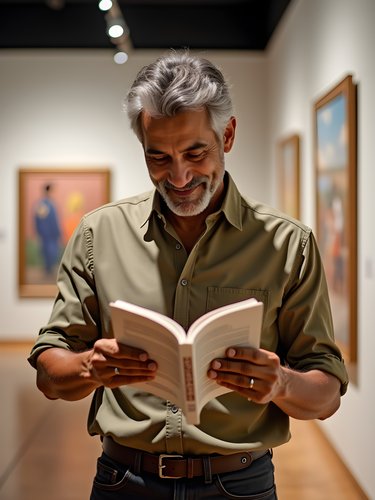
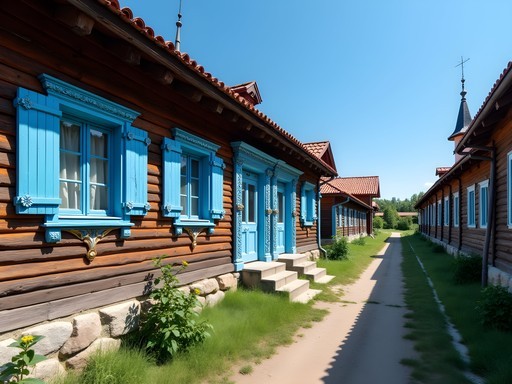
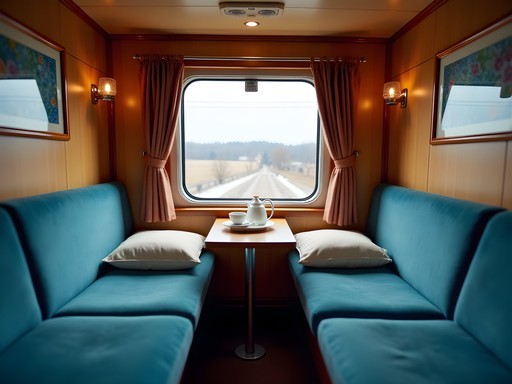
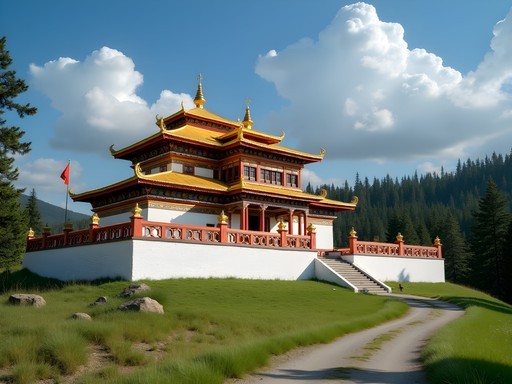











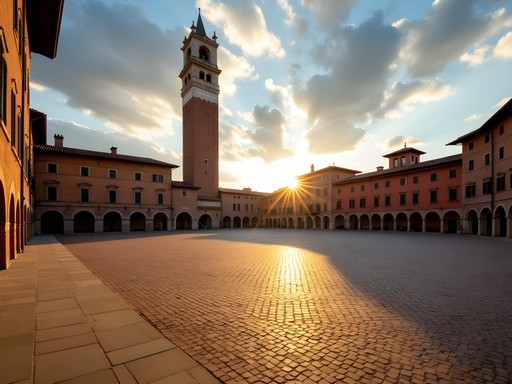
Comments
Savannah Walker
Amit, your post captures the soul of the Trans-Siberian perfectly! I did this journey in winter, which was a completely different experience - the frozen Lake Baikal was otherworldly. For anyone planning this trip: the third-class platskart carriages are where the real cultural exchange happens. Sure, they're less private than the kupe compartments, but I made friends with a Russian grandmother who insisted on feeding me homemade blini every morning and a group of students who taught me card games I still don't fully understand. Khabarovsk was my surprise favorite stop - the regional museum there tells the fascinating story of Russian expansion eastward better than any history book. This journey is as much about the people as the places.
Amit Sullivan
Thanks Savannah! You're absolutely right about platskart - that's where the heart of Russia reveals itself. Winter journey sounds incredible - might have to try that next time!
springmate
Just finished this route last month and it was INCREDIBLE!! Your cricket analogy is spot on - that rhythm becomes the soundtrack to your journey. The babushkas selling food at platforms were my highlight - tried everything from smoked omul fish to homemade pirozhki! One tip: bring a good translation app because English is limited once you're east of Irkutsk. I used my offline translator constantly. Also, the dining car menu changed completely after Ulan-Ude - much more Asian influence. Loved every minute!!!
dreamnomad
Planning this journey for next summer. How many days would you recommend for the Irkutsk-Vladivostok stretch? Did you feel rushed?
Amit Sullivan
I'd say minimum 7 days on the train itself, but add 2-3 days each for Irkutsk, Ulan-Ude and Khabarovsk if you can. The stops make the journey!
dreamnomad
Thanks Amit! Going to block out 2 weeks then. Can't wait!
waveadventurer
Wow, this brings back memories! Did the Moscow-Vladivostok route last year. The Baikal views were unreal!
Savannah Walker
Lake Baikal is something else, right? I spent three extra days there just hiking around the shoreline. Did you stop at any of the small villages?
waveadventurer
Just Listvyanka for a day trip. Wish I'd stayed longer!
smartmate
Just booked my tickets for next May after reading this! Any tips on which class to book? Is platzkart worth the experience or should I splurge on kupé?
photobackpacker
Not the author but I did platzkart from Moscow to Irkutsk and kupé from Irkutsk to Vladivostok. Honestly, platzkart was more fun - met tons of locals who shared food and stories. Kupé is more comfortable for sleeping though!
smartmate
Thanks for the insight! Maybe I'll mix it up and try both!
backpackbuddy
Your photos of Lake Baikal at sunrise are incredible! What camera setup did you use?
Amit Sullivan
Thanks! Just my trusty old Sony A7III with the 24-70mm f/2.8 lens. The light did all the heavy lifting!
Jean Wells
What a beautifully written account of this eastern section of the Trans-Siberian. After decades of rail travel across Asia, I still find this particular stretch the most contemplative. Your observation about Khabarovsk as a testament to imperial ambition is spot-on - the city's architecture tells that story of Russia reaching for the Pacific so clearly. For those planning this journey, I'd suggest breaking it at Birobidzhan as well if time permits. The Jewish Autonomous Region history provides another fascinating layer to understand Soviet ethnic policies. One practical tip: the Chinese-Russian border section has been increasingly strict about photography - something to be mindful of if you're continuing beyond Vladivostok. Amit, did you notice any changes in how border crossings are handled compared to previous years?
Amit Sullivan
Thank you for the thoughtful comment, Jean! I didn't continue into China this time, but fellow passengers mentioned the photography restrictions were indeed stricter than in previous years. Your suggestion about Birobidzhan is excellent - I regret not stopping there myself.
happyone6274
OMG your photos are STUNNING! I can't believe how blue Lake Baikal is! Adding this to my travel list right now!!! 😍
freegal
How was the food situation on the train? Did you stock up beforehand or rely on the dining car?
backpackbuddy
Not the author but did this route in 2024 - definitely stock up! The platform babushkas selling home-cooked food at stops were my lifesavers!
oceanqueen
This looks AMAZING!!! 😍 Did you book your tickets in advance or while in Russia? Planning my trip for next summer and getting nervous about the logistics!
Amit Sullivan
I booked about 2 months ahead through the official Russian Railways site (RZD). Definitely recommend advance booking for summer - the good cabins sell out quickly!
Jean Wells
If I may add to Amit's advice - summer is peak season, so book as early as the system allows (usually 90 days out). I've done this journey three times over the years, and I now use Real Russia for my bookings. The small fee is worth it for the English support and they can secure better berths than I could on my own.
Venture X
Premium card with 2X miles, $300 travel credit, Priority Pass